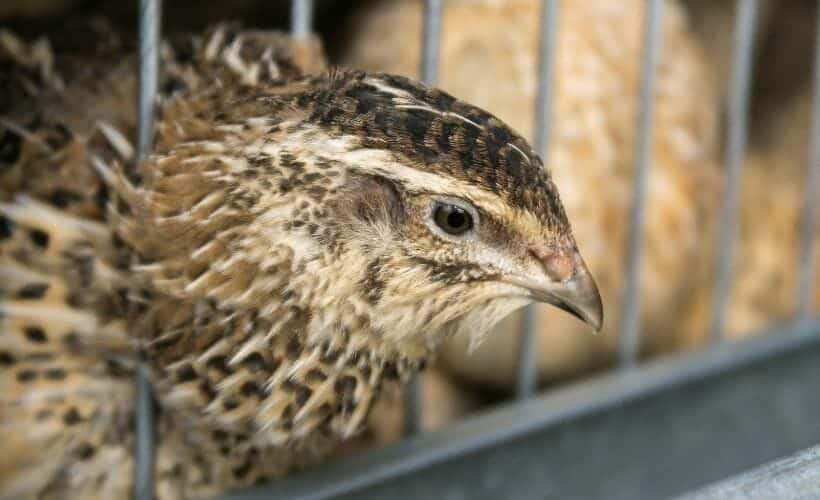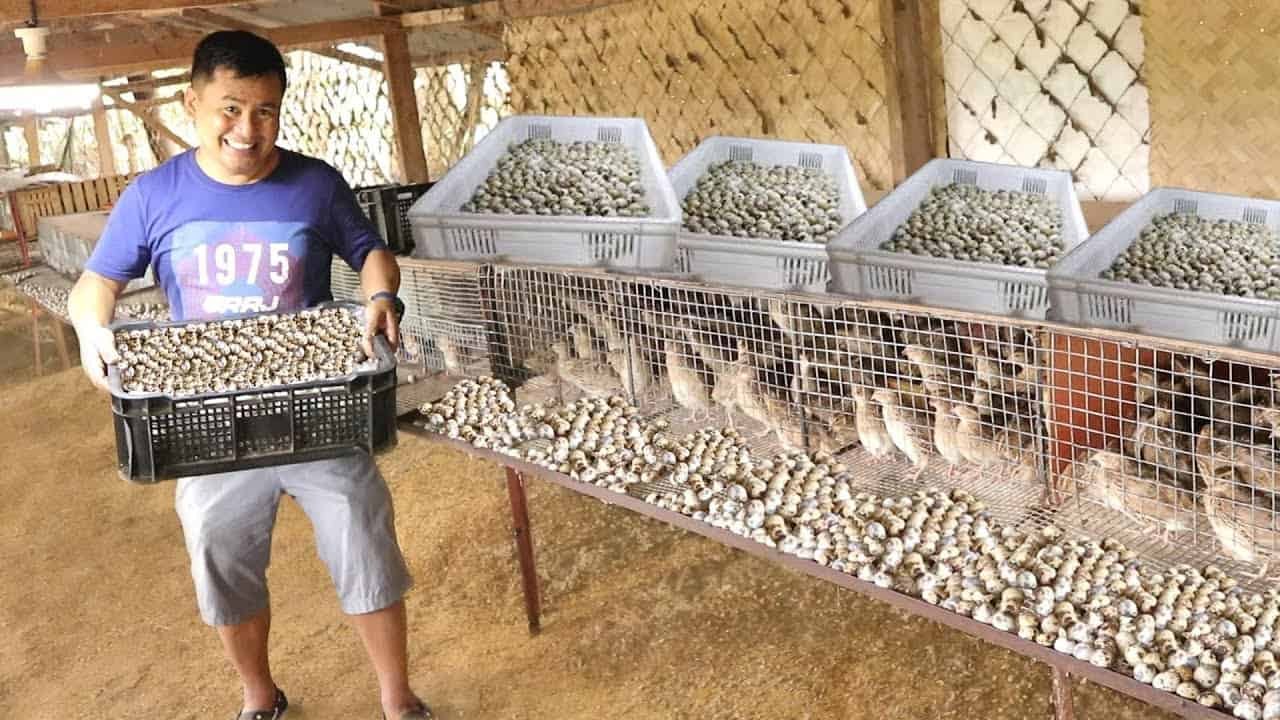How to Start a Quail Farm? Starting a quail farm entails selecting suitable housing and habitat, sourcing healthy breeding stock, providing proper nutrition and care, implementing effective waste management systems, and considering market opportunities for eggs, meat, and ornamental birds.
From Scratch to Success: A Beginner’s Guide to Starting a Quail Farm
Quail farming has been gaining popularity in recent years, and for good reason. It offers a unique opportunity for individuals to enter the agricultural industry with relatively low start-up costs and high demand for quail meat and eggs. Quails are small birds that are easy to raise and require minimal space, making them an ideal choice for those with limited land or resources.
In addition, quail meat and eggs are highly sought after for their nutritional value and unique flavor. This article will provide a comprehensive guide to quail farming, covering everything from breed selection to marketing and selling your products.
Understanding the Basics: Quail Breeds and Housing Requirements
There are several different breeds of quails to choose from, each with its own unique characteristics. The most common breeds used in quail farming include the Japanese quail, the Coturnix quail, and the Bobwhite quail. Japanese quails are known for their high egg production, while Coturnix quails are prized for their meat. Bobwhite quails are popular for hunting purposes.
| Feature | Coturnix Quail (Japanese) | Bobwhite Quail | Button Quail (Chinese Painted) | Other Quail Types |
|---|---|---|---|---|
| Purpose | Primarily for eggs and meat | Primarily for meat, also some eggs | Mostly ornamental, small eggs | Variety of breeds with different traits |
| Size | Medium-sized | Larger than Coturnix | Smallest quail breed | Range from small to medium-sized |
| Egg Production | Excellent layers (200-300 eggs/year) | Moderate layers (100-150 eggs/year) | Low egg production | Variable, some breeds decent layers |
| Meat Production | Good meat yield | Excellent meat yield | Minimal meat yield | Potential for meat depending on the breed |
| Temperament | Docile, easy to handle | Can be flighty | Generally docile | Varies depending on the breed |
| Maturity | Reach maturity quickly (6-8 weeks) | Slightly slower maturation | Slowest to mature | Varies depending on the breed |
| Climate Adaptability | Adaptable to various climates | Hardy, well-suited for colder areas | Less cold-tolerant | Some breeds adapted to specific climates |
When it comes to housing requirements, quails do not need a lot of space. A small cage or aviary is sufficient for a small flock of quails. The cage should be well-ventilated and provide enough space for the birds to move around comfortably.
Quails prefer temperatures between 60-75 degrees Fahrenheit, so it is important to provide adequate heating or cooling depending on the climate. Lighting is also important for quails, as they require at least 14-16 hours of light per day to maintain optimal egg production.
Setting Up Your Quail Farm: Location, Equipment, and Supplies
Choosing the right location for your quail farm is crucial for its success. Ideally, you should select a location that is close to your target market and has easy access to transportation routes. It is also important to consider the availability of water and electricity, as these are essential for quail farming.
In terms of equipment and supplies, there are a few essentials that you will need to get started. These include cages or aviaries, feeders, waterers, and heating or cooling systems. Cages should be made of sturdy materials and provide enough space for the quails to move around comfortably. Feeders and waterers should be easily accessible and kept clean to prevent the spread of disease. Heating or cooling systems should be installed to maintain the optimal temperature for the quails.
Feeding and Nutrition: What Quails Need to Thrive
Proper nutrition is essential for the health and growth of your quails. Quails are omnivorous birds and require a balanced diet that includes both plant-based and animal-based foods. Commercial quail feed is readily available and provides all the necessary nutrients for your birds. It is important to choose a feed that is specifically formulated for quails, as their nutritional requirements are different from other poultry species.
In addition to commercial feed, quails can also be supplemented with fresh fruits and vegetables, as well as insects and worms. These provide additional nutrients and help to keep the birds active and engaged. It is important to provide clean, fresh water at all times, as quails have a high water requirement.
Health and Disease Management: Preventing and Treating Common Ailments
Like any livestock, quails are susceptible to various health issues. However, with proper care and management, many of these ailments can be prevented or treated effectively. Common health issues that affect quails include respiratory infections, parasites, and nutritional deficiencies.
To prevent respiratory infections, it is important to provide good ventilation in the quail housing and keep the environment clean. Regular cleaning of cages and disinfection of equipment can help prevent the spread of disease. Parasites can be controlled through regular deworming and the use of insecticides. Nutritional deficiencies can be prevented by providing a balanced diet and ensuring that the quails have access to clean, fresh water at all times.
Breeding Quails: Maximizing Fertility and Hatch Rates
Breeding quails is relatively easy, as they are prolific breeders. However, there are a few things you can do to maximize fertility and hatch rates in your quail flock. Quails are social birds and prefer to mate in groups, so it is important to keep a ratio of one male to every three to five females. This will ensure that each female has a chance to mate and produce fertile eggs.
It is also important to provide the right conditions for breeding. This includes providing adequate nesting boxes or areas for the females to lay their eggs. The nesting boxes should be filled with clean, dry bedding material such as straw or wood shavings. The eggs should be collected daily to prevent them from being damaged or eaten by other birds.
Incubation and Hatching: From Eggs to Chicks
Once the eggs have been laid, they can be collected and placed in an incubator for hatching. Quail eggs have a short incubation period of about 17-18 days, so it is important to monitor the temperature and humidity levels in the incubator closely. The ideal temperature for incubating quail eggs is around 99-100 degrees Fahrenheit, with a humidity level of around 50-60%.
During the incubation period, it is important to turn the eggs several times a day to prevent the embryos from sticking to the shell. This can be done manually or with the help of an automatic egg turner. It is also important to monitor the development of the embryos by candling the eggs regularly. Candling involves shining a light through the egg to check for signs of development.
Raising Quail Chicks: Care and Feeding of Young Birds
Once the quail chicks have hatched, they will need special care and attention to ensure their health and well-being. The chicks should be kept in a brooder box or cage that is warm, clean, and draft-free. The temperature in the brooder should be around 95-100 degrees Fahrenheit for the first week, and then gradually reduced by 5 degrees each week until it reaches room temperature.
Quail chicks should be fed a high-quality starter feed that is specifically formulated for young birds. The feed should be finely ground to make it easier for the chicks to eat. It is important to provide clean, fresh water at all times, as quail chicks have a high water requirement.
Harvesting and Processing: Preparing Quail Meat and Eggs for Sale
Quail meat and eggs are highly sought after for their unique flavor and nutritional value. Harvesting quail meat involves slaughtering the birds in a humane manner and processing them for sale. Quails can be slaughtered at around 6-8 weeks of age, depending on the desired size of the birds.
To process quail meat, the birds are typically plucked, eviscerated, and then chilled or frozen for storage. Quail eggs can be collected daily and cleaned before being sold or used for consumption. It is important to follow proper food safety guidelines when handling and processing quail meat and eggs to prevent the spread of bacteria or contamination.
Marketing and Selling: Finding Your Niche in the Quail Industry
Marketing and selling your quail products is an important aspect of running a successful quail farm. It is important to identify your target market and find your niche in the quail industry. Quail meat and eggs are often marketed as gourmet or specialty products, so it is important to highlight their unique qualities and appeal to a specific customer base.
There are several ways to market and sell your quail products. This can include selling directly to consumers through farmers markets, online platforms, or through a CSA (Community Supported Agriculture) program. You can also consider selling to local restaurants, specialty food stores, or other businesses that cater to a niche market.
The Rewards of Quail Farming and Tips for Success
Quail farming offers a unique opportunity for individuals to enter the agricultural industry with relatively low start-up costs and high demand for quail meat and eggs. With proper care and management, quails can be a profitable venture that provides a sustainable source of income. By understanding the basics of quail farming, setting up your farm properly, providing the right nutrition and care, and marketing your products effectively, you can achieve success in the quail industry.
Originally posted 2024-03-16 15:34:05.





